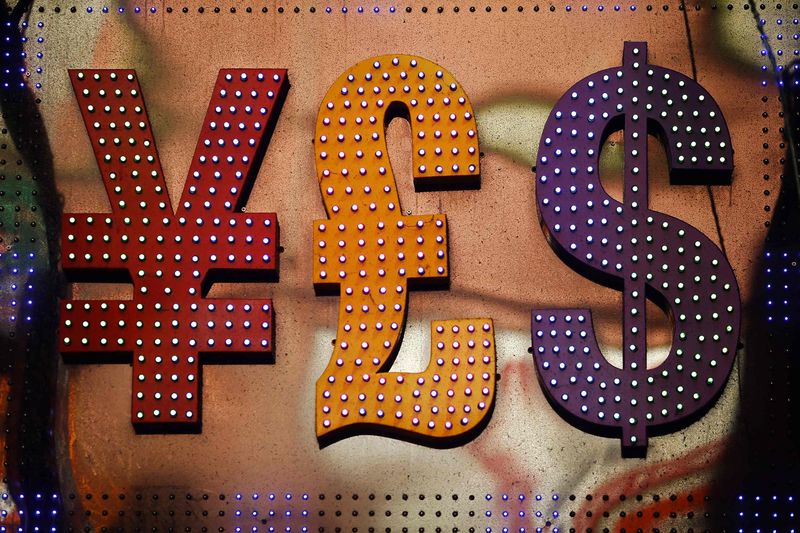* Won weakens over 1% before some recovery
* Rupiah depreciates up to 0.5%
* Chinese yuan steady after cenbank lifts midpoint
(Adds text, updates prices)
By Aby Jose Koilparambil
Jan 8 (Reuters) - Most Asian currencies weakened on
Wednesday after Iran fired rockets at Iraqi airbases hosting
U.S. military forces, fuelling worries that a crisis in the
Middle East will escalate further, potentially disrupting oil
supplies from the region.
Global markets were set on edge after a top Iranian
commander in Iraq was killed by a U.S. drone strike last week.
Crude prices, a key element impacting the currencies of
major oil importers, jumped more than 2% in morning trade, and
investors also piled into safe-haven assets such as gold.
ING analysts in a note said that the general risk-off
sentiment should hurt those currencies reliant on overseas
finance the most, such as the Indonesian rupiah and the Indian
rupee.
"The obvious concern for markets, is where does this all
end? The worry is that we could see more from Iran, provoking
U.S. retaliation - a scenario that cannot be ruled out given the
warnings from President (Donald) Trump," the ING analysts said
in a separate note.
The South Korean won KRW=KFTC depreciated more than a
percent to its weakest level in nearly a month on news of the
Iranian attacks, before recovering some lost ground.
South Korea, the world's fifth largest importer of crude and
a current account surplus economy, is generally less impacted by
oil price movements compared to other major importers of the
commodity in the region such as India and Indonesia.
The Indian rupee INR=IN weakened as much as 0.3%, while
the Indonesian rupiah IDR=ID lost up to 0.5%.
The Malaysian ringgit MYR=MY depreciated about 0.3% while
the Singapore dollar SGD= weakened marginally.
The Thai baht THB=TH too came under pressure, weakening
0.3%.
Meanwhile, the movement in the Chinese yuan CNY=CFXS was
relatively muted unlike its regional peers as it strengthened
intermittently after the central bank lifted its midpoint to the
highest in five months to reflect strong spot market gains in
the previous session. Prior to market opening, the People's Bank of China set the
midpoint rate CNY=PBOC at 6.9450 per dollar, 240 pips or 0.35%
firmer than the previous fix of 6.9690 and the strongest since
Aug. 5.
TAIWAN DOLLAR REVERSES COURSE
The Taiwan dollar TWD=TP recovered from earlier losses in
the session to trade slightly stronger.
Data released on Tuesday evening local time showed the
trade-reliant island's December exports grew 4% year-on-year,
beating Reuters poll expectations of 1.7%.
Taiwan is one of Asia's major exporters, especially of
technology goods, and its export trend is a key gauge of global
demand for technology gadgets worldwide.
CURRENCIES VS U.S. DOLLAR
Change on the day at 0519 GMT
Currency Latest bid Previous day Pct Move
Japan yen 108.350 108.42 +0.06
Sing dlr 1.351 1.3499 -0.07
Taiwan dlr 30.056 30.082 +0.09
Korean won 1171.000 1166.4 -0.39
Baht 30.270 30.19 -0.26
Peso 50.910 50.91 +0.00
Rupiah 13925.000 13870 -0.39
Rupee 71.990 71.83 -0.22
Ringgit 4.103 4.091 -0.28
Yuan 6.944 6.9460 +0.03
Change so far in 2020
Currency Latest bid End 2019 Pct Move
Japan yen 108.350 108.61 +0.24
Sing dlr 1.351 1.3444 -0.47
Taiwan dlr 30.056 30.106 +0.17
Korean won 1171.000 1156.40 -1.25
Baht 30.270 29.91 -1.19
Peso 50.910 50.65 -0.51
Rupiah 13925.000 13880 -0.32
Rupee 71.990 71.38 -0.85
Ringgit 4.103 4.0890 -0.33
Yuan 6.944 6.9632 +0.28
